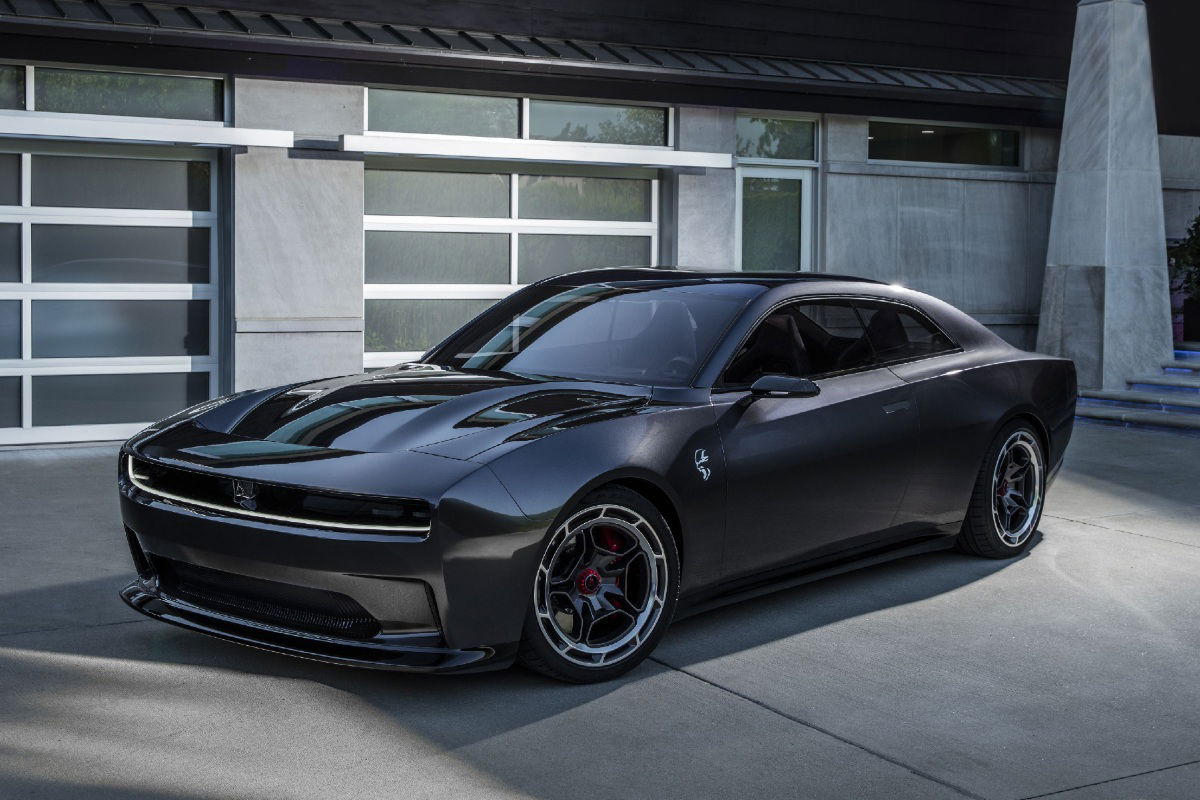
Several weeks ago, my colleague Stephen Ottley penned a piece for these pages expressing his opinion that the Chevrolet Camaro shouldn’t be on the 2025 Supercars Australia grid.
And so, With All Due Respect (as my old pal Larry Perkins would say), I must disagree.
READ MORE: Why Supercars needs to lose the Chevrolet Camaro | Opinion
Opinions are like tummy buttons – everyone has one and they can all be different. Not wrong, just different. Here’s mine.
Stephen bases his opinion on the fact that the Camaro is not only no longer available in Australia but will cease production in 2024. He has a point. But it’s not a point that holds much water in my book. The history of the Australian Touring Car Championship (for that is what the Supercars Championship really is) is littered with examples of cars that were never sold here and/or were raced for some time after their production demise.
Cars such as the Barlett Camaro, the Ford Sierra RS500 and the BMW M3 spring to mind. Even the late, great, R32 Nissan Skyline was limited to 100 units in Australia. The current Camaro actually sold the thick end of 1500 units here before it’s demise, a fact that Stephen has left out of his piece.
So, in terms of legitimacy to be on the grid, the Camaro has more than earned it’s right to be here. Moreover, history says that the axing of a model just due to its lack of showroom availability is hardly fair. The Falcon FGX lived on as a Supercars race car for a full two years after the final car rolled off the lines.

The Camaro represents the Chevrolet brand here in the same way as, for instance, the M3 did for BMW many years ago. To knock that is to knock the history of Australian motorsport. Moreover, the Chevrolet brand is alive and well in this country. They’re likely to move somewhere north of 3500 vehicles here this year. Not huge, but a bloody sight better than a number of other brands that have been officially represented here since the Opera House was a twinkle in Jorn Utzon’s eye. The Camaro has full validity as the face of the Chevy brand.
Let me remind everyone, production of the three-door Sierra RS500 stopped in 1987 and yet the car was a mainstay of the ATCC right through until the end of 1992! And the car was never officially sold here at all. QED.
Moving on… Stephen suggested that the Cadillac brand, and specifically the CT4 saloon, should be the basis of the 2025 GM race car. Ok, it’s an idea. But Cadillac is represented on the racetrack in the LMDh Le Mans class. It isn’t really a brand fit for Supercars, even as and when Cadillac cars do go on sale here in Australia. Personally, and I could be proven wrong, I don’t see it.
What I do see is a transition to a new Chevrolet body in NASCAR in 2025 and then the opportunity for that to flow into Supercars in 2026. That would neatly coincide with the likely progression of the current Gen3 cars into Super2.
The motor industry is in a period of huge transition, the like of which hasn’t been seen for a hundred years since the advent of mass production post World War I. And we’re already seeing the pain that this is inflicting on product planning departments. Any legacy manufacturer who is putting ‘all their eggs into one basket’ as regards powertrain at the moment is probably doomed to failure.
Am I the only one here who has noticed, for instance, that the narrative from Stellantis around the new Dodge Charger appears to have changed from ‘electric only’ to ‘I reckon we can slot an ICE into this baby?’

How cool does that car look from the images we’ve seen so far! Smaller that the outgoing, Mercedes-based, Charger of the last 15 years, it looks a treat. It probably won’t be sold in Australia. I couldn’t care less; I’d love to see that body racing on a Gen3 chassis in Supercars. That would be no different from the Allan Moffat Mustang of 1970, by way of example.
READ MORE: Dodge reveals all-electric Charger Daytona SRT muscle car
Meanwhile, the ‘production car relevancy’ that Stephen quoted in his article as being made a mockery of, is important regardless of whether a car is sold in Australia and regardless of whether it is still in production. Production car relevancy refers to the look, the DNA, of the styling of each car. It’s what was so desperately wrong with the 2019 Supercars Ford Mustang. Production car relevancy does not refer to model availability.
When GM in the USA gave me permission to produce a Gen3 Supercars at Triple Eight, in late 2020, using the IP of the Camaro body, they were unequivocal in their insistence that the integrity of the production car styling was maintained. To that end, the Technical Director of Triple Eight, Jeromy Moore, and I had almost weekly video meetings with not the motorsport department of GM, but with the actual lead designer of the Camaro. Those meetings were all about ensuring that the look and feel of the road car was maintained as the car morphed into a race car on the Gen3 chassis. That’s why, in Stephen’s words, “it really is a stunning machine.”
The future of GM in Supercars is likely to be, and should be, with the Chevrolet brand. Does the model that is used as the base have to be available in Australia? No. But maybe it will be. Wait and see.
In the meantime, the Camaro can, and will, race through until at least the end of 2025 here. Leave it be please and respect the history of this great category.
Just my two pennyworth as an old pensioner watching the world go by in Brisbane and, hey presto, we have two different views on the table. That’s the way it should be and both should be respected.
Meanwhile, that 2025 Dodge Challenger looks stunning, judging by the recently released body-in-white images!












Discussion about this post